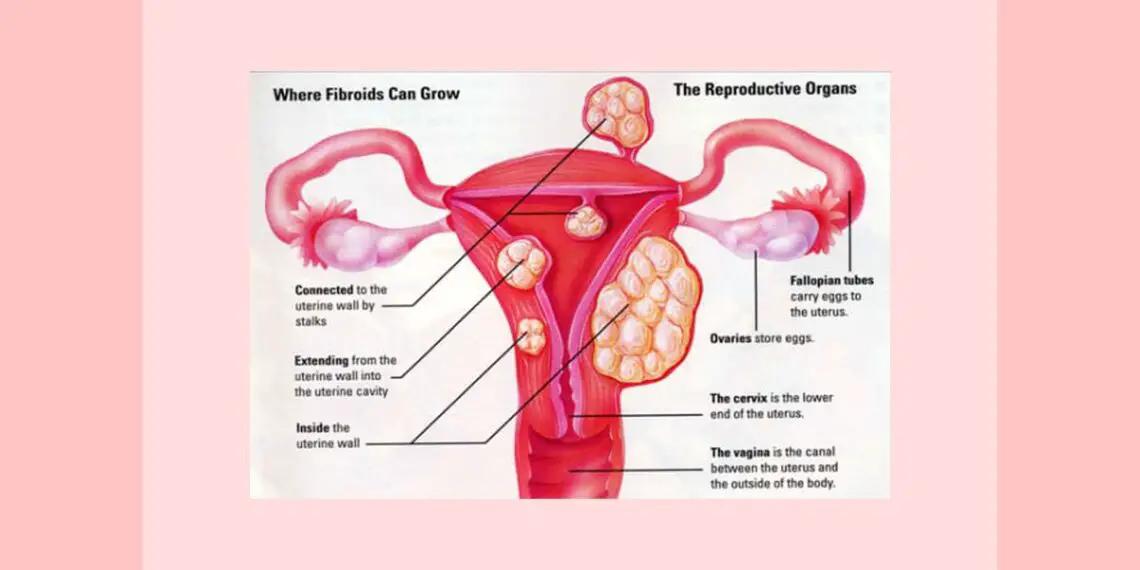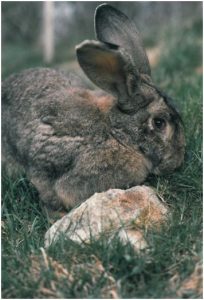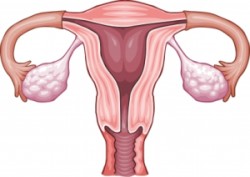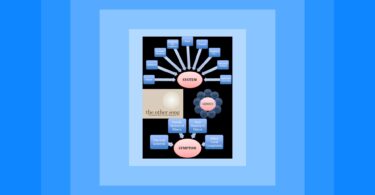Miki is a 33 year old woman who suffers from debilitating period pains, menorrhagia and has fibroids that have regrown after they were removed 2.5 years ago. She visited the school clinic in October 2012. Since then, she has had 2 in-person follow-ups and kept in touch with regular telephone updates.
She feels the fibroids as “hard muscle inside – smooth muscle, maybe like the tip of the nose, protruding.” Castor oil packs soften them, but only temporarily.
Her flow is very heavy and dark – she needs a fresh tampon every 45 minutes for the first two days of the period. The pain in her abdomen is “intense, cramping, cold” that “builds and builds and builds,” bringing on nausea and diarrhea. Her entire back feels “dull, intense pressure,” as if “someone is pulling me apart, pressing and pulling.” The pain wants to “just burst out, but can’t get out fast enough. It wants to explode, break my back.” She breaks out in cold sweats from the pain and has to stay covered under a blanket, even in 85 degree weather.
For two days every month, she says, “I have to lock myself in the house, curl up into a ball. It’s the only way to ride out the pain.”
After the second day, the flow becomes lighter and less clotted. On the fourth day, the pain returns, along with heavy clots. Two days later, it lightens up again. The entire period lasts eight to nine days.
She also experiences sharp, stinging ovulation pain that feels like “being jabbed with the tip of a pen.”
At this point, she starts to cry. In order to shift her focus from her present situation to a time where she experienced her state vividly, with less compensation, we ask about her childhood fears.
She was afraid of her father as a child, and afraid of people generally. The sounds from the heater at the start of the cold season scared her – she was convinced that someone was in the house and he would creep up the stairs and murder her. She would hide and try not to be seen, convinced that the intruder was “moving slowly towards her, slinking about the ground trying not to be seen until they pounce.”
And that reminded her of how she is today:
“I would sit in the corner, at the back of the room, where I can watch everyone. I am uncomfortable being in front. I like to see what’s around me before I do anything…I don’t want to have people looking at me.” When asked what would happen if people did look at her, she started to cry again. “It makes me feel…vulnerable. I’d rather be in a corner, be prepared. Makes me feel vulnerable if I’m in the center or surrounded. If I was sitting in this room, I’d be in that corner right there!” (She indicated the far corner of the room.)
Vulnerable?
“To be vulnerable is to be “panicky. A little unsure of myself. I want to crawl into a hole and disappear. You’re surrounded.”
Crawl into a hole?
“If there’s a hole, I’d jump into a rabbit hole and escape. People can’t get me. I just want to run and disappear…into the woods.”
Many people describe various ways they would like to hide from danger but few describe it as wanting to “disappear into a hole” when they are unsure of themselves. Even fewer are so specific about taking refuge in a rabbit hole in the woods, where one can run and disappear.
We explore dreams, an arena where the rational mind has little control, and even fewer means of compensating. I ask about childhood dreams.
As a child she often had dreams of being chased:
“I’m running on a dark road, being chased. The giant bear is running and running. It’s hopeless. I know he’s going to catch me anyway. I’m scared. I keep going, going, running. I’m on a dark road in the forest. Then the bear jumps on a motorcycle on the road. He jumps off and I get mauled to death.
I just see the [hand gesture of pouncing]. I turn around and see him coming at me and landing on me. I’m on my back.”
As she recalls the dream, she talks about her love of the forest spontaneously.
“It’s my favorite place to be. I love running. Trail running is my favorite thing. Running…the earthy smell of fresh dirt. Leaves start falling. Crunching. Refreshing. I feel alive. I hear crunchy noises under feet. Smells like the forest – wet, stinking. Like leaves composting. Decaying smell. Fresh, not rancid. Bright color. Yellow. Dry crisp air. Sounds. Blankets everything.”
As she is steeped in her sense experience – of movement, of smell, of hearing, of sight and of touch – while invoking the forest, I ask her about foods that she loved as a child. Divya Chhabra taught the importance of eliciting food memories as a means of grounding the patient in sensory experience. When they are truly in their sense experience, they get closer to the non-human source that they resonate with. In Chhabra parlance, they approach “the wall” separating the conscious and non-conscious mind.
Her favorite foods as a child were things she could “stash…walk around with them. Take them wherever I want. Apples, bananas, blueberries… I don’t like to sit down and eat very much. I’m definitely a fruit person.”
Now, as an adult, she loves carrots that she carries around to munch on throughout the day. “I like foods that don’t make me feel heavy. Cool and light, like air, green trees, blowing with the wind. Water.”
She also loves natto (Japanese fermented soybeans). “It’s like slimy snot. Smells like stinky feet. Rotting. Sitting in a dark, hot place, like bacteria. It’s earthy. I picture moist dirt, fertile earth. Playing in springtime, light and airy, dark and rich. Smells good, comforting. Not like a pillow. Soft, nice place to grow.”
Analysis
This patient offers incredibly rich sensory details of her experience very readily. Each memory would trigger a flood of other memories that immerse us in her experience. The smells and sounds of the forest are especially vivid for her. It is where she would turn to seek refuge (preferably in a rabbit hole) when she feels vulnerable. It is the setting of her death in the recurring childhood dream of pursuit. It is her favorite place to go to as an adult. She evokes the forest floor for us: the smell of “fresh dirt”, wet and stinking, decaying, yet “fresh,” where leaves “are composting.” It is an incredibly precise description. Moreover, it is the same smell that she loves about her favorite food, natto: “rotting…earthy” that reminds her of “dirt, fertile earth.” It is extraordinary to associate the smell of decay with “fresh” and “refreshing.” It is truly absurd to love a food for the fact that it smells like “stinking feet,” and “slimy snot” – to her, they are “comforting” smells. Even more astonishingly, she describes that earthy bed of decomposition as a “soft, nice place to grow.”
This is nothing if not strange, rare and peculiar.
Rajan Sankaran first pointed out explicitly, that these instances of the absurd, where human emotion and human experiences are related in non-human terms, are the strategic places in a case. They reveal themselves when the client is in touch with the non-human source with which she resonates.
Moreover, food offers the one of the best entries into the absurd. Getting the client to describe food as they experience it with their five senses puts her in the most authentic state of being, where she and her non-human source experience the world as one.
Natto holds the power to recall the deeper memory of the non-human Other that this patient relates to. For her, it is the primal experience of the forest floor and an uncanny knowledge that it is home.
But what is the relation between the forest and the source? We have to look at how she experiences the forest and how she experiences her chief complaint. She hears the crunchy leaves under the feet, notices the bright yellow of the leaves and the dry crisp air of the forest, its sounds. This suggests an animal on the move on the forest floor.
Almost from the very start, she comes across as a vulnerable mammal. She experiences her menstrual pain as a struggle with an Other: “as if someone is pulling me apart, pressing and pulling.” Her menstrual pain “wants to burst out, but can’t get out fast enough.” In her dreams of running from a giant bear in the woods, she can’t run away from her pursuer fast enough.
She has to “lock herself at home.” As a child, she hid under covers when she was terrified by the thought of the murderer in her home. As an adult, she seeks to avoid being seen. She felt she had to be able to see everyone in order to feel secure. We see the theme of a defenseless animal who felt vulnerable when exposed.
Even more revealing is her spontaneous exclamation that she would “jump into a rabbit hole and disappear.” Her modus operandi is hiding. Divya Chhabra teaches the importance of paying attention to the instances when a patient names a source. It takes on added significance when it confluences with the other aspects of the case. In this case, the rabbit hole is not merely metaphorical. It ties together her fearfulness, her vulnerability, her experience of the forest, her running, her hiding, her vigilance and of course, burrowing.
A very nice confirming detail is to be found in the patient’s description of her fibroids as being “like the tip of the nose.” It is a cartoon characteristic of a rabbit. The nose of the rabbit, with over 100 million smell receptors, is its main asset for survival. Rabbits’ noses are constantly twitching in order to expose more of their smell receptors to air-borne scents that can warn them of danger long before they can see them.
A client who is extremely articulate about her remedy’s non-human source experiences life at the “delusional” level. 1M is the appropriate potency.
We give her Rabbit – Lac Oryctogalus 1M, to be taken at mid-cycle every month.
Follow-up
From the first dose (November 2012), Miki experienced significant relief from the debilitating pain and nausea. Her period lasted five days instead of the usual seven. The periods continue to improve to the point where she experiences only slight cramping and she can leave her house during the first couple of days. By the third dose, she notices that her mental state has changed. She had always been “preparing for a ball to drop, for something bad to happen – a crisis.” On the remedy, she has noticed that she has been “at ease,” without a sense of “impending doom.”
Almost a year later Miki breaks up with her boyfriend of many years. This was the culmination of a stressful summer for her – a close friend died, and she was working long hours every day. While her dysmenorrhea had gone and her period had settled into a 5-day cycle, she started to experience pressure on the bladder and urinary urgency. Her gynecologist told her that her big fibroid had grown by one cm all around and two more had grown since her last visit more than a year ago. She had back pain and was experiencing menstrual cramps again.
At a follow up in December 2013, we decide to put her on a weekly dose of the same remedy in 30C to address the physical problems. The decision to lower the potency was also based on her responses to the big emotional upheavals she had been going through. She was matter of fact, not emotional.
The 30C worked beautifully to resolve all her physical complaints – they completely resolved within 2 months. When we saw Miki in clinic on March 14, 2015, two and a half years after her initial visit, she was radiantly healthy. Her recent ultrasound and MRI showed no new fibroids and her existing fibroids had shrunk a little. She offered this assessment of herself and of homeopathy:
“Two and a half years ago, I couldn’t sit in front of people and talk. Now I don’t have that fear. If I could have hidden in that hole, I would. I really feel like a different person. It was slight improvement, on a day-to-day basis. Nothing in my life has really changed. I feel different. That changes my whole perspective.”
In the March 2015 issue of Hpathy, Andrea Szekely published a case of Lac Oryctolagus whose title says it all: ”It is Dangerous to Step into the World”. In marked similarity to Miki’s case, Szekely’s client’s case also centered on “a sense of danger. Not wanting to be seen. Feeling very small. Feeling singled out and vulnerable.” In Claire Bleakley’s proving of Lac Oryctolagus the remedy had an affinity with the reproductive organs, a theme of pregnancy and fertility. There was a particularly striking sensation of being “scraped raw” in the womb, the skin and the stomach.
It is very interesting to find different routes to the core experience of the rabbit.





